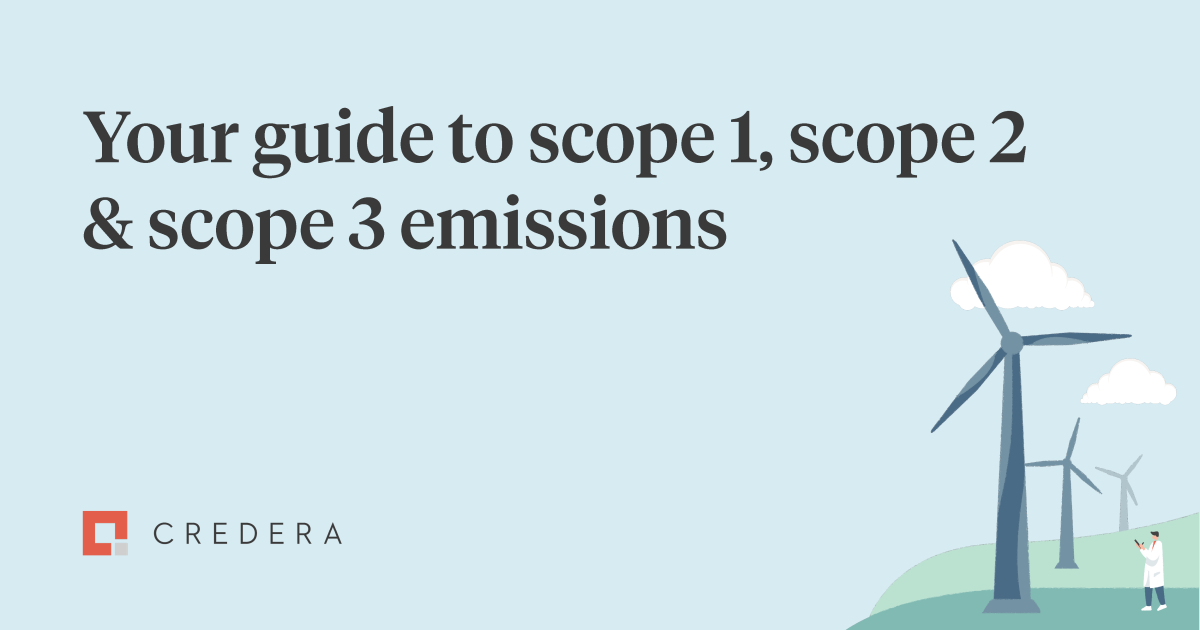
The UK Government’s target is to reduce the UK’s carbon emissions by at least 78% by 2035, compared to 1990 levels. Consumers, shareholders and employees are looking to companies to lead on corporate responsibility. Some companies already report on their operational emissions, known as Scope 1 & Scope 2. But understanding their value chain emissions, otherwise known as Scope 3, may prove to be a far bigger challenge.
What is the reason behind dividing emissions into scopes?
The Greenhouse Gas Protocol (GHGP) was developed by the World Business Council for Sustainable Development and the World Resources Institute. The GHGP helps define how organisations manage and report greenhouse gas emissions. This led to categorising all emissions into three categories – Scope 1, Scope 2 and Scope 3. They did this to avoid double-counting emissions and to help organisations separate them into:
Emissions that organisations can control
Emissions they can influence
Emissions they just need to report on
What is the difference between upstream and downstream activities?
The classification of emission-related activities is directly linked to the supply chain of the production process. Here, upstream refers to the material inputs needed for production. While downstream activities occur at the opposite end – when products need to be transported and distributed.
Upstream emissions, therefore, include all those that occur in the lifecycle of a product or material before it is sold by the producer.
Downstream emissions are those that are produced by the product or material after its sale by the producer, including distribution, storage, product use and end-of-life treatment.

Greenhouse Gas (GHG) Emissions: Scope 1, Scope 2, Scope 3
What is included in Scope 1?
Scope 1 includes all the emissions generated from the activities of an organisation. More broadly, these are the emissions an organisation can control. Some examples of it are:
Emissions from fuel burned in company-owned or controlled boilers
Fuel emissions produced by company vehicles
Emissions from chemical production in company-owned or controlled process equipment
Direct emissions that are not included into Scope 1:
Direct CO2 emissions from the combustion of biomass (reported separately)
GHG emissions not covered by the Kyoto Protocol, such as CFCs and NOx
What is included in Scope 2?
Scope 2 includes indirect emissions from purchased electricity, heating, cooling & steam. These emissions are created by a supplier during the energy production process and, therefore, can all be classified as upstream. Some examples of Scope 2 emissions are:
Emissions produced by suppliers of purchased electricity
Emissions produced by heating and cooling suppliers
Data centre electricity consumption and resulting emissions
What is included in Scope 3?
Scope 3 includes all emissions from sources that an organisation doesn’t own or control, that are not already included in Scope 2. They account for greenhouse gas emissions through the entire value chain of an organisation, including upstream and downstream emissions. Scope 3 covers areas such as business travel, procurement, waste disposal, and water.
Some examples of Scope 3 emissions:
Business travel and employee commuting associated emissions
Emissions from transportation and distribution of products
Processing and end-of-life treatment of sold products
Leased assets and franchises emissions
Emissions associated with investments and capital goods
Scope 3 emissions are responsible for the greatest share of an organisation’s carbon footprint and are generally considered the most difficult to measure and report. At the same time, Scope 3 emissions control is crucial to any organisation’s effective carbon reduction strategy.
Contact Us
Ready to achieve your vision? We're here to help.
We'd love to start a conversation. Fill out the form and we'll connect you with the right person.
Searching for a new career?
View job openings